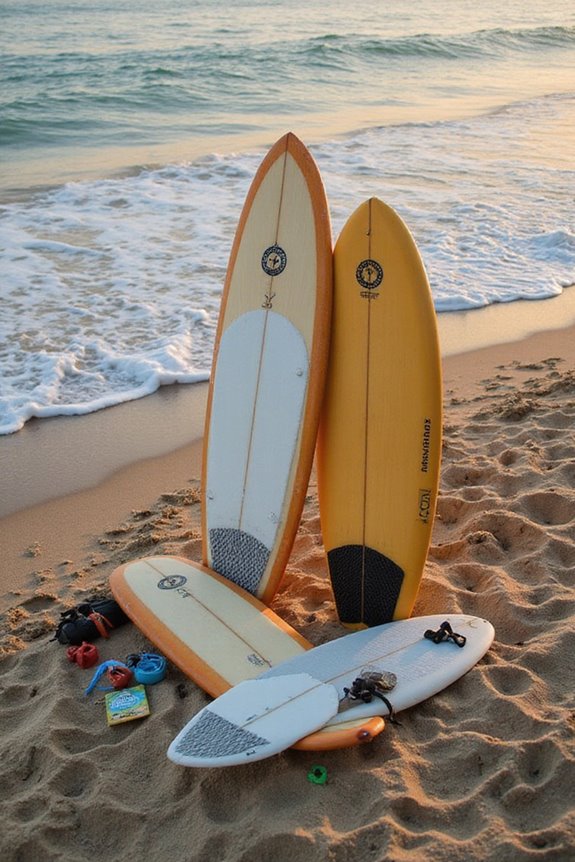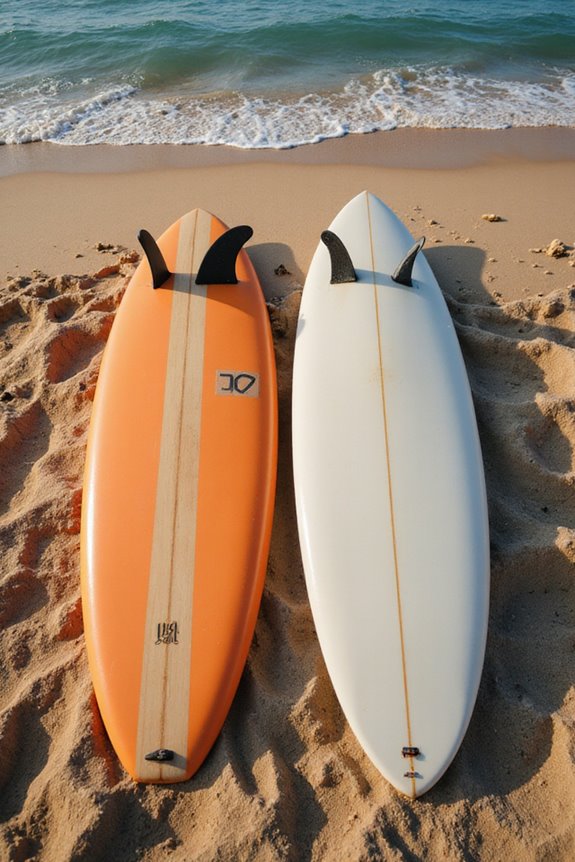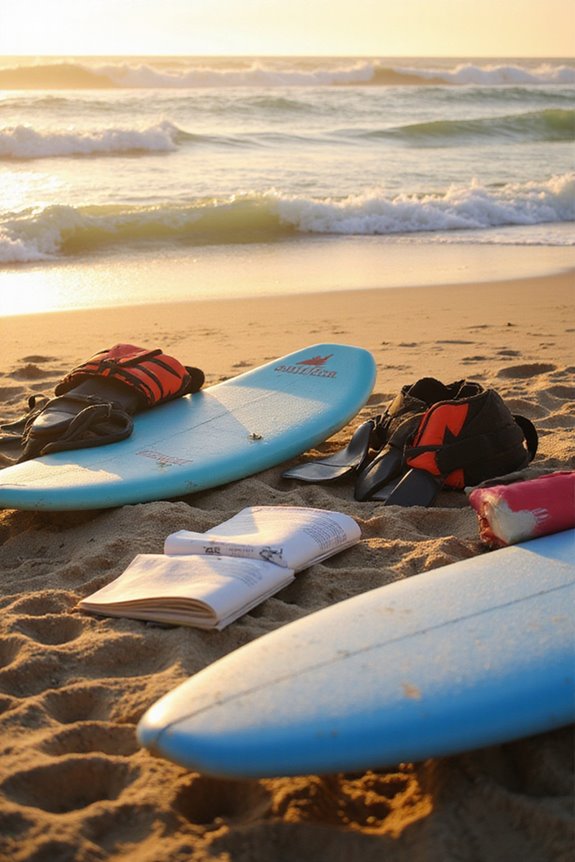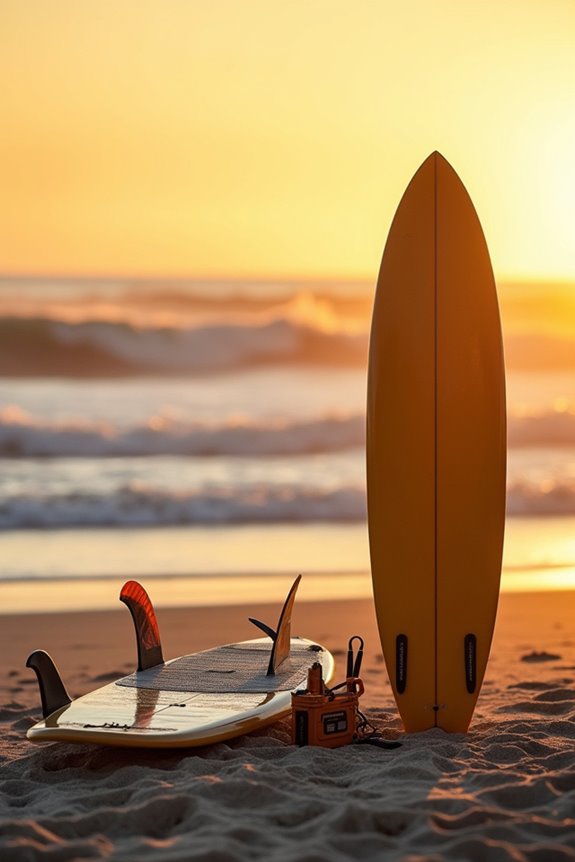To handle beginners in the lineup, we should teach them lineup etiquette and prioritize safety. We can guide them to observe experienced surfers and position themselves slightly outside the main peak. Encouraging communication through friendly gestures helps clarify intentions, and we need to reinforce the importance of wave priority—respecting those closest to the peak. By fostering confidence and monitoring ocean conditions, we create a welcoming environment. Let’s explore more ways to guarantee a smooth experience for everyone involved.
Key Takeaways
- Encourage beginners to observe experienced surfers to understand wave dynamics and etiquette before paddling out.
- Position beginners slightly outside the main peak to reduce interference and allow them to learn wave selection.
- Communicate effectively with beginners about wave priority and the importance of yielding to surfers already riding waves.
- Remind beginners to maintain safety awareness by observing ocean conditions, currents, and tides before entering the water.
- Foster a supportive environment by being patient and offering guidance on proper lineup etiquette and turn-taking procedures.
Understanding Lineup Etiquette for Beginners
When we talk about lineup etiquette, it’s important to recognize that there are several unwritten rules designed to guarantee safety and harmony among surfers. To start, beginners should utilize lineup observation techniques, watching experienced surfers to learn about peak locations and traffic flow.
Effective communication signals, such as friendly gestures, help clarify intentions and turns, reducing confusion.
It’s essential to respect the established pecking order; surfers closest to the peak have priority. Beginners should avoid paddling directly to the peak, instead steering around the outskirts. Additionally, understanding the surf conditions at your chosen beach can significantly enhance your lineup experience and safety.
Positioning Beginners in the Lineup

Positioning beginners in the lineup is a key aspect of ensuring a safe and productive surfing experience. We should place beginners slightly outside the main peak to minimize interference with experienced surfers. This beginner positioning allows them to observe wave selection and lineup dynamics while reducing collision risks with faster surfers.
Using visible landmarks helps beginners maintain their spot and understand their position relative to others. They should also spend time observing wave patterns before paddling out, identifying safe entry points and manageable rides. Additionally, understanding wave consistency can guide beginners in selecting the right moments to paddle for waves. Finally, moving around the lineup lets beginners find less crowded spots, enhancing their comfort and adaptability in varying conditions. This approach fosters confidence and promotes a respectful, positive surfing environment.
Managing Turn-Taking and Wave Priority
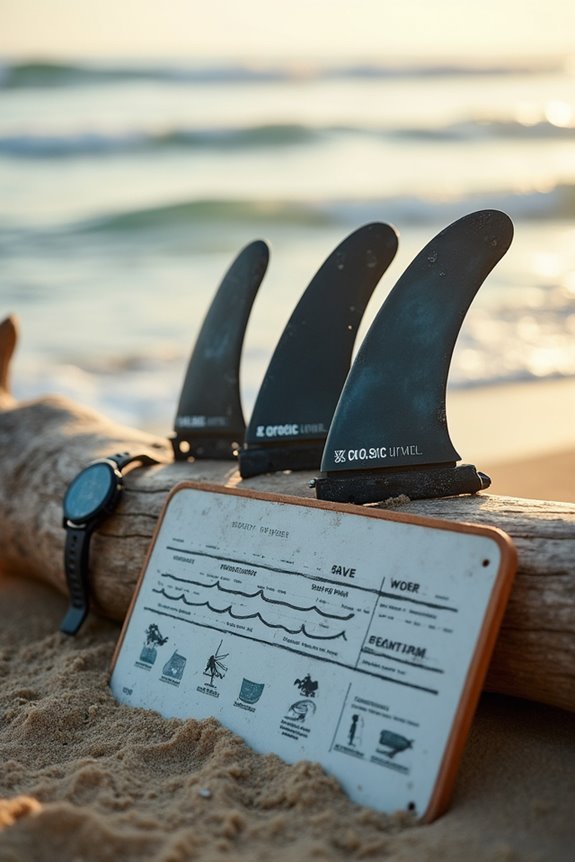
Managing turn-taking and wave priority is essential for maintaining order and respect in the surfing lineup. To guarantee fairness, the surfer closest to the wave’s peak has the highest wave priority. If you’re paddling for a wave, always yield to those already riding it. Avoid dropping in or snaking, as these actions break etiquette and can lead to conflict.
In crowded conditions, a queue system helps manage turn-taking. The surfer who has waited the longest gets priority to paddle for the next wave. After riding, they should return to the back of the line. By consistently respecting these rules, we can create a harmonious surfing environment that benefits everyone. Additionally, understanding ocean dynamics plays a vital role in determining wave priority and ensuring a safe surfing experience.
Safety Awareness for Beginners
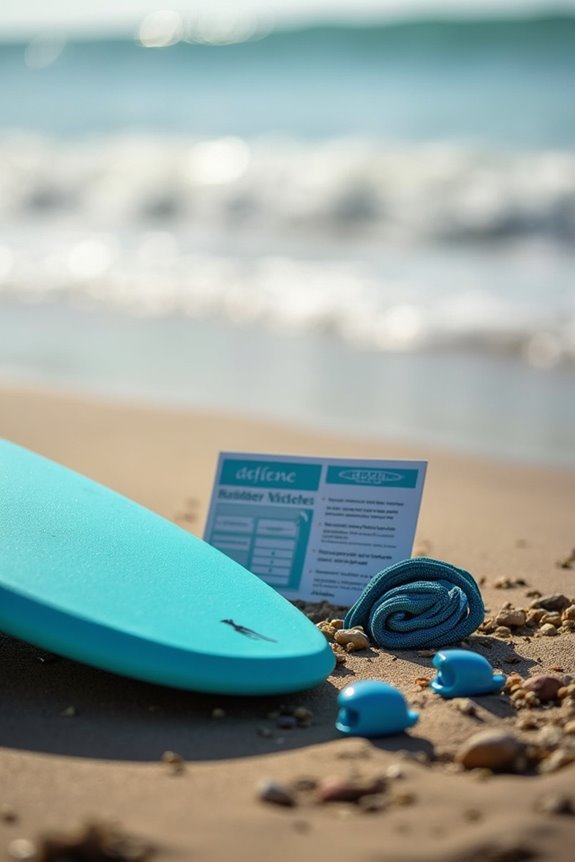
To guarantee a safe surfing experience, it’s essential for us to develop a strong awareness of the ocean and its conditions before entering the water. We should observe wave size, breaks, and patterns for at least five minutes to anticipate hazards. Understanding currents and tides helps us avoid exhaustion and accidents.
Using the right protective gear is vital. We must wear a leash to keep our boards close and reduce collision risks. Choosing the appropriate wetsuit thickness based on water temperature prevents hypothermia and enhances comfort. Additionally, wearing rash guards and applying sunscreen protects our skin from injuries and UV damage.
Finally, we should continuously monitor conditions, as ocean dynamics can change rapidly, affecting our safety. Checking local surf reports is crucial for staying informed about wave quality and safety conditions.
Building Confidence and Learning Etiquette
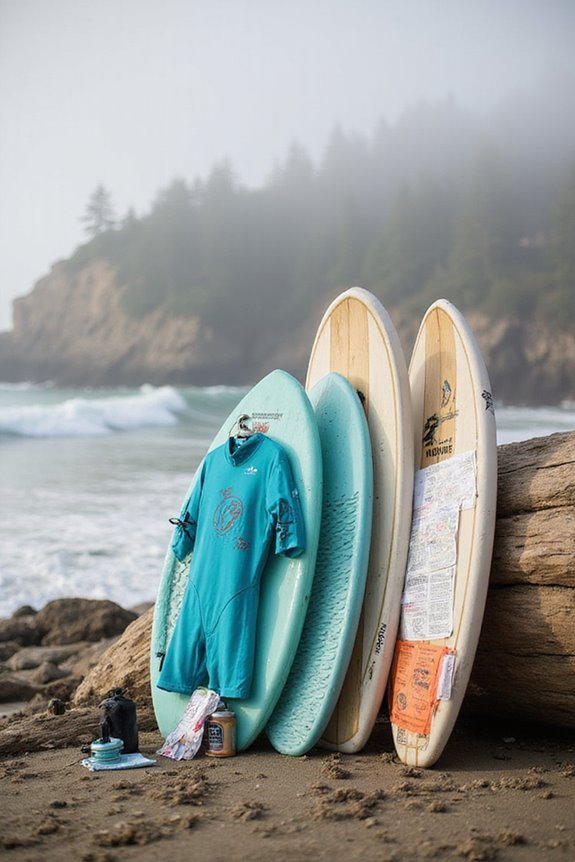
Building confidence in the surf lineup is essential for beginners, especially when learning to navigate social dynamics and etiquette. We can enhance our confidence building by observing experienced surfers, understanding wave priority, and practicing proper etiquette reinforcement.
Key Points for Beginners:
- Right of Way: The surfer closest to the peak has priority; never drop in on others.
- Wave Riding: Only one surfer should ride a wave at a time.
- Yielding: Paddling surfers must yield to those currently riding waves.
- Positioning: Paddle wide around breaking waves and maintain an orderly lineup. Additionally, being aware of local surf etiquette can greatly improve interactions in the lineup.
Frequently Asked Questions
How Do I Communicate With Beginners in the Lineup?
When we think about guiding newcomers, we should embrace beginner etiquette and effective signals. By fostering clear communication, we can create a nurturing atmosphere where everyone feels empowered to learn and grow together.
What Should I Do if a Beginner Drops in on Me?
When a beginner drops in on us, let’s stay calm and gently remind them about beginner etiquette. We can share waves by communicating clearly, helping them understand their role in the lineup while ensuring everyone’s safety.
How Can I Encourage Beginners Without Being Condescending?
To encourage beginners without being condescending, we can use positive reinforcement and supportive language. By highlighting their specific achievements and maintaining an empathetic tone, we foster a growth mindset and confidence in their abilities.
Are There Specific Boards Beginners Should Use?
When we think of learning to surf, it’s like trying to walk on water. For beginners, ideal board sizes—7 to 9 feet—make soft tops or funboards the best board types to guarantee stability and confidence.
What Are Common Mistakes Beginners Make in the Lineup?
We often notice beginners struggle with paddle positioning and wave etiquette. Their footwork can be inconsistent, leading to missed opportunities. Encouraging clear communication and awareness helps improve their performance and overall experience in the lineup.

